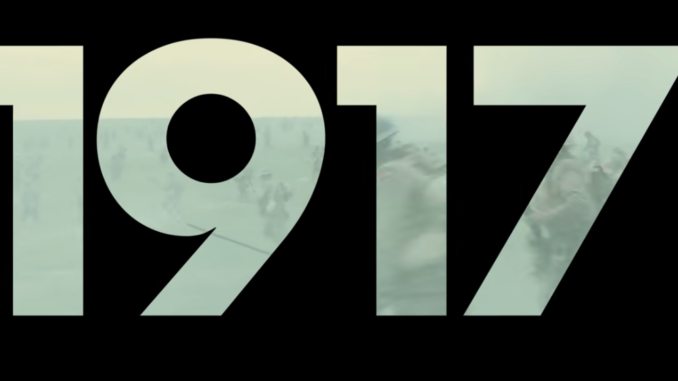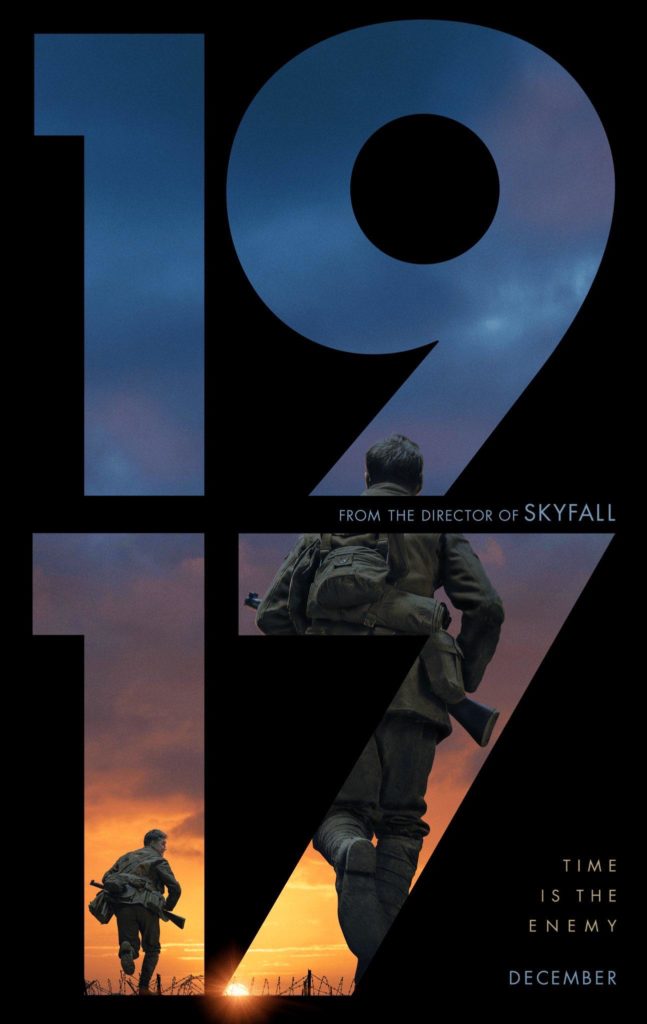
“The first time I understood the idea of war was when my grandfather told me about his experiences in the First World War. This film is not a story about my grandfather, but rather the spirit of him—what these men went through, the sacrifices, the sense of believing in something greater than themselves.
“Our two main characters are sent on a dangerous journey through enemy territory to deliver a vital message to save 1,600 soldiers, and our camera never leaves them. I wanted to travel every step and breathe every breath with these boys, and cinematographer Roger Deakins and I discussed shooting 1917 in the most immersive way. We designed it to bring audiences as close as possible to their experience. It’s been the most exciting job of my career.”
—Sam Mendes
Heart & Soul -1917 reinforces that war is hell. The storyline of the journey was extremely compelling and the passing of the torch to your comrade in arms, when one is lost is very moving.
It was spellbinding in how you felt like you were there, experiencing the ravages and depravity of war. The two Lance Corporals were exceptional in their portrayals. The urgency to save those 1,600 men from certain death, at all costs exhibit the highest form of human sacrifice.
Their journey, and the encounters on the way, the manmade obstacles, having to go over dead bodies to reach the final goal, the military heroism and unlikely civilian help especially with the language barrier was outstanding.
The Cinematography really placed you in the midst of the war. Totally immersive experience.
Through weaving a story of two exhausted young men in a terrifying, extreme situation, the Producers, Mendes and Wilson-Cairns tell a story that speaks of the grit of a generation tested by the atrocities of war.
When the mission is accomplished, there is no celebrating, not around the wounded and dead, or Lance Corporal Blake older brother, just a sense of finality. Looking at Lance Corporal Schofield, it’s almost seemed like utter dereliction, but with him looking at his family pictures, ready to go home.
The Back Story
Before the United Nations was formed, prior to NATO—well before the assassination of Archduke Franz Ferdinand set off a chain of events that would draw the world into conflict—nations in the West had primarily acted in their own interests. Never before had countries set aside nationalism for the collective greater good. For that reason, the First World War in many ways unified the West and became the bedrock of modern society.
A global shockwave that made humanity confront our common ground, our joint ideals and shared values, World War I demanded unthinkable sacrifice—calling upon a tested generation’s honor, duty and fidelity to country. The impact of the war, and particularly its effect on the young soldiers asked to rise up and defend their homelands, has intrigued filmmaker Sam Mendes since he was a boy.
The idea for 1917 was sparked by stories that Mendes’ grandfather, the late Alfred H. Mendes, shared about his time as a Lance Corporal in the First World War, as well as the colorful characters he met during his service. In the year 1917, Alfred was a 19-year-old who enlisted in the British Army. Due to his small stature, the five-foot-four-inch soldier was chosen to be a messenger on the Western Front.
The mist on No Man’s Land—the unclaimed land between Allied and enemy trenches on the frontlines that neither side crossed for fear of being attacked—hung at approximately five and a half feet, so the young sprinter was able to carry messages laterally from post to post. His height meant he was not visible to the enemy, and he literally ran for his life. During the war, Alfred was injured and gassed, and was awarded a medal for his bravery. In his later years, the Trinidadian novelist retired to his birthplace in the West Indies, where he wrote his memoirs.
“I was always fascinated by the Great War, perhaps because my grandfather told me about it when I was very young, and perhaps also because at that stage of my life, I’m not sure I’d even registered the concept of war before,” Mendes says. “Our film is fiction, but certain scenes and aspects of it are drawn from stories he told me, and ones told him by his fellow soldiers. This simple kernel of an idea—of a single man carrying a message from one place to another—stayed with me and became the starting point for 1917.”
Mendes spent time researching first-person accounts of this era, many of which are held at the Imperial War Museum in London. As he took notes, Mendes began to compile fragments of stories of bravery confronting terror; in time, he began to dovetail them into a single tale.
During this exploration, he discovered that World War I was so wholly entrenched in a relatively small geographic area that it had very few long journeys. “It was a war mainly of paralysis,” Mendes says, “one in which millions lost their lives over 200 or 300 yards of land. People are justly celebrated in all parts of the world for gaining tiny sections of land in World War I. In the Battle of Vimy Ridge, for example, they gained 500 yards, but it remains one of the war’s greatest acts of heroism. So, the question I asked myself was how to tell a story about a single epic journey, when essentially nobody traveled very far.”
His research stalled momentarily, Mendes soon discovered what would become the backdrop for his tale. In 1917, the Germans retreated to what was known as Siegfriedstellung, or the Hindenburg Line. After six months of planning and digging a huge trench system of defenses and deep-lying artillery, the Germans placed a vast number of troops—once spread over the original, much longer, front line—into a new, enormously fortified, condensed line of defense.
The filmmaker discusses how he found the propulsive narrative of what would become his greatest challenge to date. “There was a brief period where, for several days, the British didn’t know whether the Germans had retreated, withdrawn or surrendered,” Mendes says. “Suddenly, the British were cut adrift in a land they had literally spent years fighting over…but had never seen before. Much of it was destroyed by the Germans, who left nothing of lasting value, destroying anything that might sustain the enemy. Anything of beauty was taken or destroyed; villages, towns, animals, food. All trees were cut down. It was made relatively impassible. The British were alone in this desolate land full of snipers, land mines and trip wires.”
Inspired by the fragments of stories from his grandfather, the first-person accounts he had researched at the Imperial War Museum—as well as the idea of the deadly venture to the Hindenburg Line—Mendes crafted the structure of the story that became 1917. “Like most of the war stories I admired, from All Quiet on the Western Front to Apocalypse Now, I wanted to create a fiction based on fact,” Mendes says. He reached out to frequent collaborator Krysty Wilson-Cairns, who, unbeknownst to Mendes at the time, is a self-proclaimed “history nerd” and was ideally suited to the material, and their journey began.

The Cast
GEORGE MacKAY
DEAN-CHARLES CHAPMAN
MARK STRONG
ANDREW SCOTT
RICHARD MADDEN
CLAIRE DUBURCQ
with COLIN FIRTH
and BENEDICT CUMBERBATCH
Executive Producers
JEB BRODY
OLEG PETROV
IGNACIO SALAZAR-SIMPSON
RICARDO MARCO BUDÉ
Produced by
SAM MENDES, p.g.a.
PIPPA HARRIS, p.g.a.
JAYNE-ANN TENGGREN, p.g.a.
CALLUM McDOUGALL, p.g.a.
BRIAN OLIVER
Written by
SAM MENDES & KRYSTY WILSON-CAIRNS
Directed by
SAM MENDES


